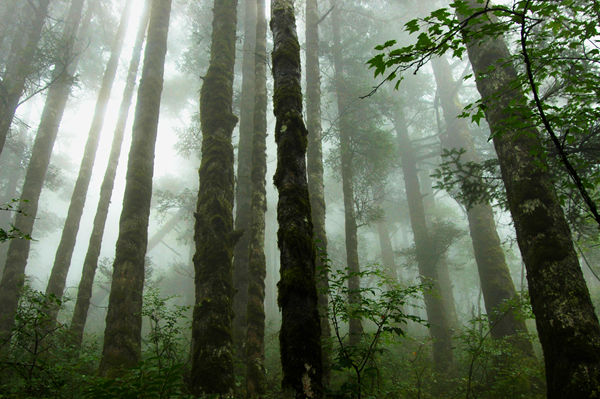Just 25 countries hold almost all of the world's undisturbed forests. More than half of that forest is in Australia, Canada, New Zealand, Russia and the U.S. And only 22 percent of forestland worldwide is protected.
世界上僅25個國家擁有幾乎所有的原始森林。而大部分的原始森林分布在澳大利亞、加拿大、新西蘭、俄羅斯和美國。但全球受保護的林地卻只占22%。
Those figures are from a new analysis in the journal Conservation Letters.
上述數據來自《保護信刊》的一項新研究中。
So what could be done to save the 13 million plus square kilometers of untouched forests? After all, they're home to more than half of the world's plants and animals and provide necessities like clean air and clean water for us humans. But they’re under serious threat, whether from logging, mining or farming. Such land use change is why only 3 percent of the forest that existed in the past still remains in the temperate parts of the globe.
那么,該如何拯救這1300萬平方公里的原始森林呢?畢竟,它是世界上半數以上的植物和動物的棲息地,它還為人類提供了諸如新鮮空氣、潔凈水之類的生活必須品。但現在,無論在伐木、采礦,還是在農業上,他們都遭受著嚴重的威脅。土地利用的改變是全球溫帶區現存原始森林僅3%的原因。
 One suggestion for preservation is to make forests a part of international environmental negotiations, like the United Nations Framework Convention on Climate Change has tried to do. The goods and services forests provide should be incorporated into economic assessments as well, not just the value of their board feet of lumber. And the world's governments should avoid further forest losses, to slow climate change and the current rate of extinction.
One suggestion for preservation is to make forests a part of international environmental negotiations, like the United Nations Framework Convention on Climate Change has tried to do. The goods and services forests provide should be incorporated into economic assessments as well, not just the value of their board feet of lumber. And the world's governments should avoid further forest losses, to slow climate change and the current rate of extinction.
保護原始森林的其中一個措施是將其列入國際環境磋商中,像《聯合國氣候變化框架公約》嘗試的一樣。森林提供的產品和服務也應納入經濟評估中,而不僅僅評估其每英尺木材的價值。世界各國政府應防止森林遭受進一步的破壞,減緩氣候變化和當前物種的消失速率。
And here's another thought: forests that are owned by the communities that actually live in them tend not to be cut down. So local ownership could help forests survive.
另一個措施是:不得砍伐社區林木。社區林木所有者應保護好它們。
 One suggestion for preservation is to make forests a part of international environmental negotiations, like the United Nations Framework Convention on Climate Change has tried to do. The goods and services forests provide should be incorporated into economic assessments as well, not just the value of their board feet of lumber. And the world's governments should avoid further forest losses, to slow climate change and the current rate of extinction.
One suggestion for preservation is to make forests a part of international environmental negotiations, like the United Nations Framework Convention on Climate Change has tried to do. The goods and services forests provide should be incorporated into economic assessments as well, not just the value of their board feet of lumber. And the world's governments should avoid further forest losses, to slow climate change and the current rate of extinction.










